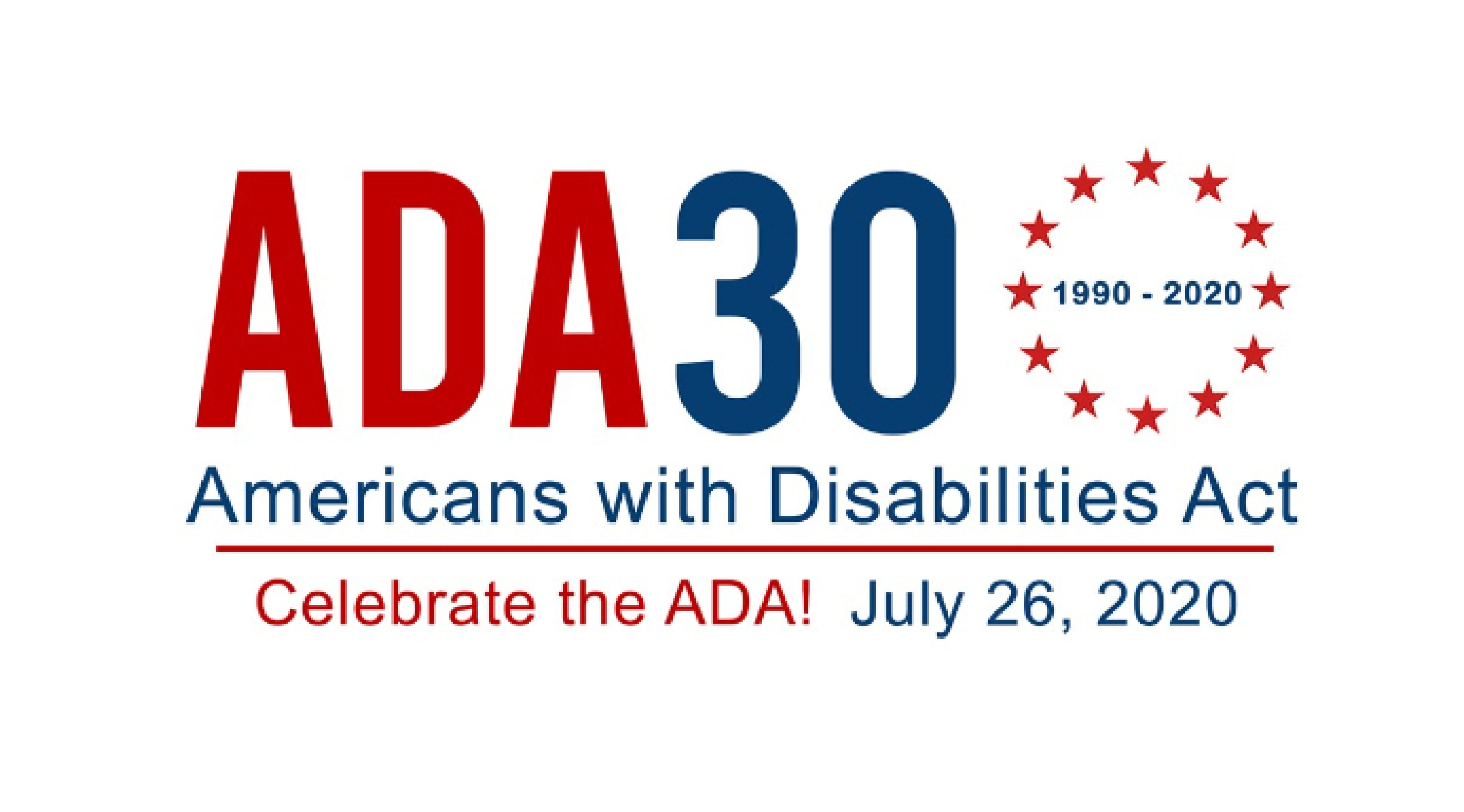Celebrating Inclusion
Accessibility Tips for Leaders
by Lauren Rabb, Wheelhouse Group
July 26, 2020 marks the 30th anniversary of the passage of the Americans with Disabilities Act (ADA) – the historic civil rights law that has opened the doors of opportunity for millions of Americans. We celebrate its legacy and look to next 30 years of how we can ensure more people can participate in all aspects of society, including the workplace.
Wheelhouse Group leads the Partnership on Employment & Accessibility Technology (PEAT) whose mission is to ensure employers create inclusive and accessible workplaces. PEAT, which is funded by the U.S Department of Labor, supports thousands of employers including small businesses and many well-known companies like Amazon, Apple, IBM, Microsoft and Verizon Media in buying, using and developing inclusive technologies.

Photo credit: ADA National Network (adata.org)
In working with these companies, we consistently hear, inclusion and workplace accessibility isn’t just the right thing to do, it’s also good for business and our bottom line.
In recognition of the ADA anniversary – and in anticipation of the next 30 years of progress – the Wheelhouse Group team is honored to share these accessibility benefits and strategies.
How Will a More Accessible Workplace Help Your Organization?
» Improved and expanded recruitment
An accessible website and online job application system ensures—and clearly communicates—that your company is interested in all qualified people, including those with disabilities. It’s an obvious way to expand the applicant pool, allowing more people to get their foot in the “virtual door,” and seek opportunities for advancement once on board.
» Increased retention
Incorporating accessible technology in the workplace is a smart corporate continuity strategy. Employees who have a disability or have become ill or injured are more likely to stay in their jobs if they have access to the technology they need to succeed.
» Maximized productivity
Some accessibility features actually help many people, with and without disabilities, increase their productivity. Usability features such as volume control, highly readable screens, open video captioning, and plain language are just a few examples of universal design (UD) that all workers may benefit from.
» Expanded diversity
A diverse workforce, inclusive of people with many backgrounds and experiences, leads to more innovative solutions for confronting challenges and achieving success.
» Reduced legal costs
Some organizations are required by law to recruit and retain qualified people with disabilities. Having an accessible technology infrastructure can be a key part of delivering upon these requirements and can help streamline recruitment processes and reduce costs associated with making individual technology-related accommodations for employees.
Steps to Make Your Workplace More Accessible
- Assess your current accessibility practices. Get a benchmarking “snapshot” of the current state of your technology and practices, the accessibility goals you want to reach, and what steps you might take to achieve them. Take a look at this benchmarking tool from PEAT.
- Train your people. Once you’re on the path to developing an accessible technology mindset, it’s time to act. Start implementing inclusive practices within your workplace and ensure your team shares your understanding of accessibility practices. General staff training on accessibility basics goes hand in hand with training on diversity and disability awareness. Review these staff training resources.
- Ensure your employment technology and practices are accessible. Are your company’s virtual doors open to everyone? According to a 2015 survey of people with disabilities conducted by PEAT, 46 percent of respondents rated their last experience applying for a job online as “difficult to impossible.” And that matters, because if your technology is limiting your pool of applicants, you could be missing out on top talent. Check out these TalentWorks resources.
- Procure accessible technology Why is procurement such a crucial part of achieving accessibility and usability for all? Because implementing accessible workplace technology means buying accessible technology in the first place. It means doing vendor research, specifying your requirements, and validating the accessibility of your product choices prior to accepting and implementing them. Most importantly, it means approaching ICT procurement with an eye toward accessibility and usability from the very beginning. Learn more about procurement of IT here.


Lauren Rabb
Sr. Consultant, Wheelhouse Group
Lauren supports the Partnership on Employment & Accessible Technology (PEAT) as the Accessible Technology Skills Gap Lead. She has extensive experience providing project management, customer experience, communications, and stakeholder engagement support to a variety of federal, corporate, and nonprofit clients.
